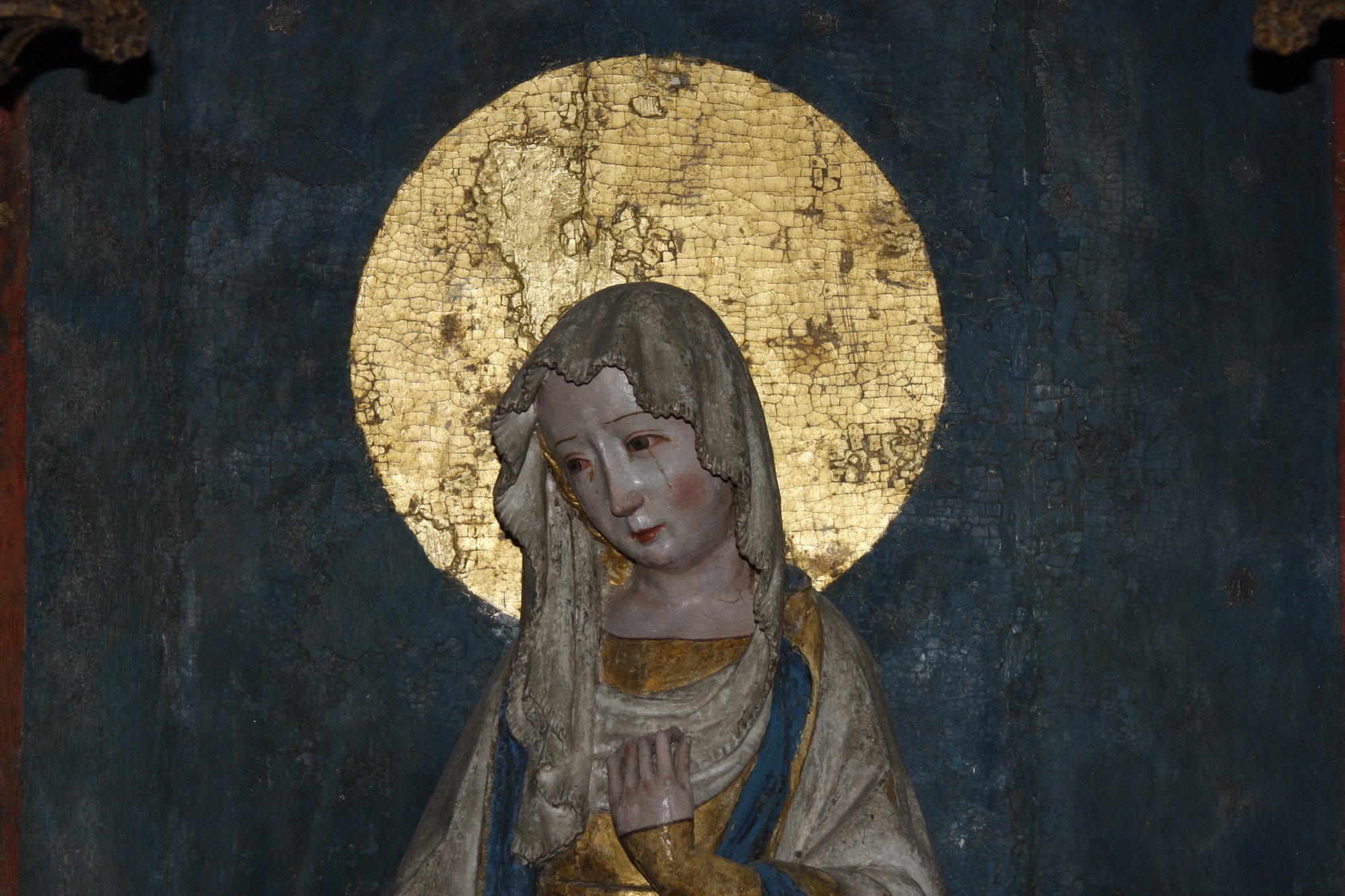The history of the Askeby altar cloth is difficult to map.
During the 17th century it was considered as a piece of handicraft from Askeby. Inside the church one could see an antependium, frontal cloth, onto which the nuns had embroidered the words “kindness and diligence,” as well as the altar list with big “monk letters in silver displaying, Hielp Maria, followed by all the apostles’ ownings.”
In the beginning of the 20th century there was a great interest in research of church history in a wider sense and in connection with this the interest for researching the churches’ textiles. Both Agnes Branting, a textile artist, and Andreas Lindblom, who was well-known in Askeby, suggested that the altar cloth was made by the nuns in Vadstena. They pointed out that the style and vines with leaves, flowers, grapes etc. on a fond of monochrome silk and damask, reminded of other crafts of art that were manufactured there.
Inger Estham who is a textile researcher, believes that the nuns in Vadstena did not make textiles to sell, but the products from Vadstena must have been distributed through ecclesiastical potentates after the Reformation.
We cannot give any exact answers to questions about the history of the altar cloth, but we must, as in other cases about the abbey history, point to possible explanations, since medieval embroideries are never signed or dated by their creators, thus making it difficult knowing the origin. Inger Estham does not believe that the altar cloth was created by the sisters in Askeby. The handicraft is complicated, and there are no remnants from the Cistercian abbey indicating that they worked with such advanced embroideries. Also, there are no international studies where you find advanced textile manufacturings within Cistercian abbeys. Not even the blazons would exist as handicraft in the abbeys.
A plausible explanation is that it was manufactured in a workshop for pearl embroidery, by a professional embroiderer. It was probably produced in the mid-15th-century and there are indications of that it was a request from the noble families whose blazons are embroidered on the altar cloth, and it may have been handed over at the re-opening of the abbey church in 1444.
Could it have been embroidered abroad? The style of the embroidery, with vines and flowers, was common in Sweden during the 16th century, but appeared earlier in other parts of Europe. Could it have been requested together with the other work of art for the church? We have valid reasons to assume that it was meant for Askeby, since the seven blazons were locally tied and, as it appears, embroidered at the time of the manufacturing.
In the middle of the embroidery you can see, as previously mentioned, a bust of Christ surrounded by five braided frames with the words of; HIELP MARIA. In the first frame there is an embroidered “b.” According to Branting/Lindblom, this letter stands for the last abbess Botilde Petersdotter, which in turn means that it would have been manufactured in the late 15th century or beginning of 16th century. However, this is not possible, since the altar cloth most probably was manufactured earlier.
The letter has not a time-bound mentioning, but is rather found in several other embroideries and could also mean “beatification.
